In the dawn of motorcycling, having descended directly from the Rover safety bicycle of the 1880s, a fork was simply the mechanism to steer the front wheel – there was no bump-absorption in these rigid forks, aside from what the recently invented pneumatic tires could offer.
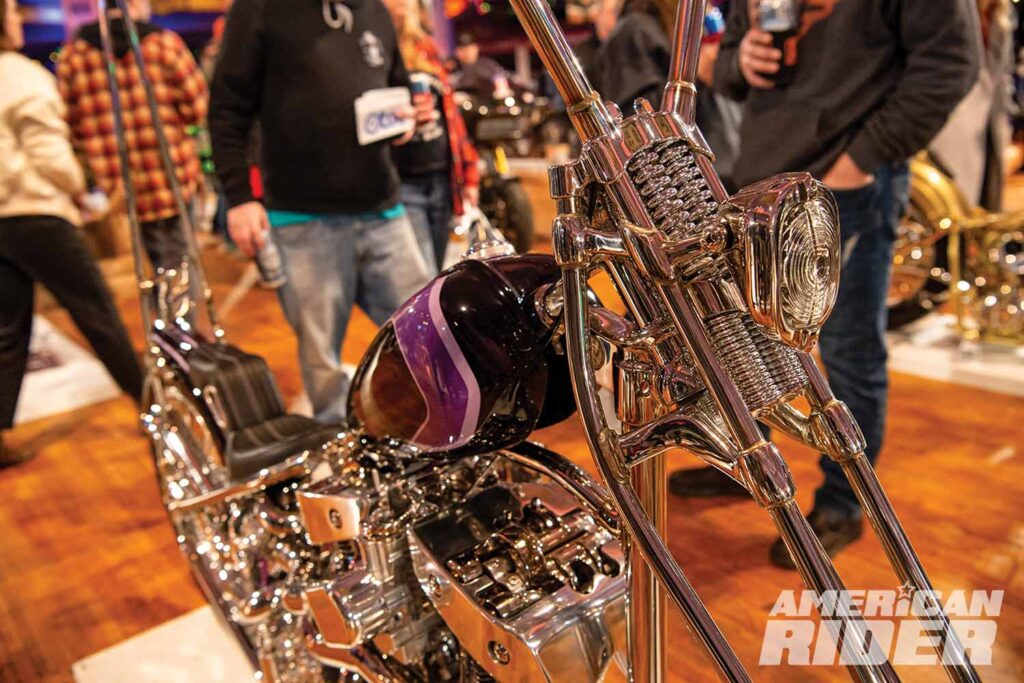
A rigid fork was adequate for smooth surfaces like boardtracks and the rare paved roads, with tires alone functioning as a suspension. For the rough stuff, which was then almost everything else, some amount of vertical movement in the front end was needed. And this became more necessary as motorcycles got heavier and faster.
The first front suspension arrangements were mechanical with a wide variety of designs. The 1903 Thomas Auto-Bi had a unique fork consisting of a small leaf spring connected to a rod linkage, with internal tubes moving up and down in the rear blade.
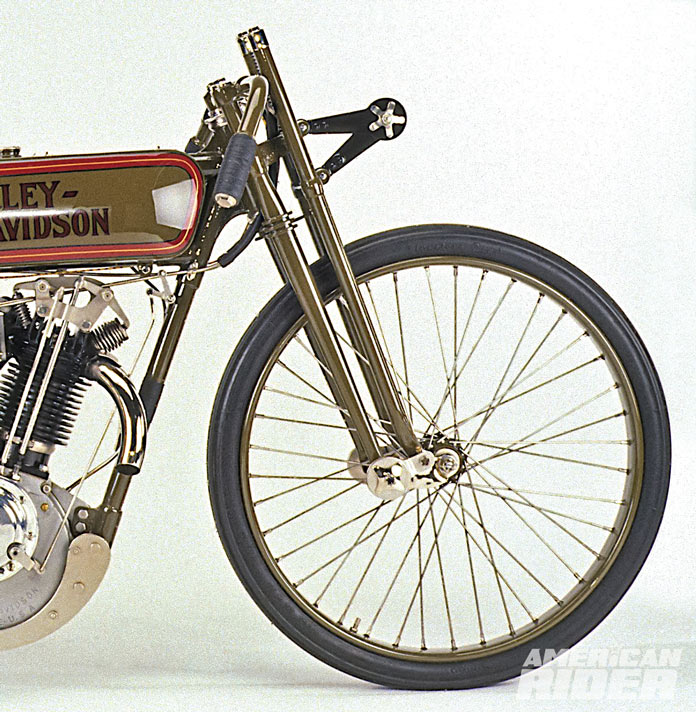
The front suspension that first caught on in Europe was the Druid type, also known as a girder fork. Indian tried several before settling on a leaf-spring setup. The now-ubiquitous telescopic fork was first tried for only a year on British Scott motorcycles in 1907. They weren’t ready for prime time, and they wouldn’t be for decades.
The Springer might seem archaic, but, as Bill Harley recognized over a century ago, it still has many advantages over other fork designs.
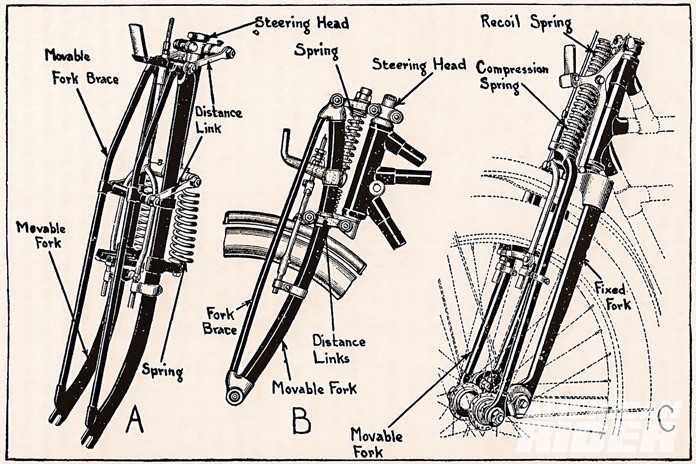
Harley’s first front suspension debuted in 1907, using the patented Sager Cushion fork with concealed springs. Bill Harley beefed up and strengthened the fork with heavier-gauge tubing and larger springs in 1908. By 1916, Harley had developed its own Springer with concealed springs and 41 feet of tempered spring steel to provide 2 inches of wheel travel over bumps.
The girder fork was quite functional, but its design had the drawback of pivoting at the steering head, moving both the wheel and fork up and down.
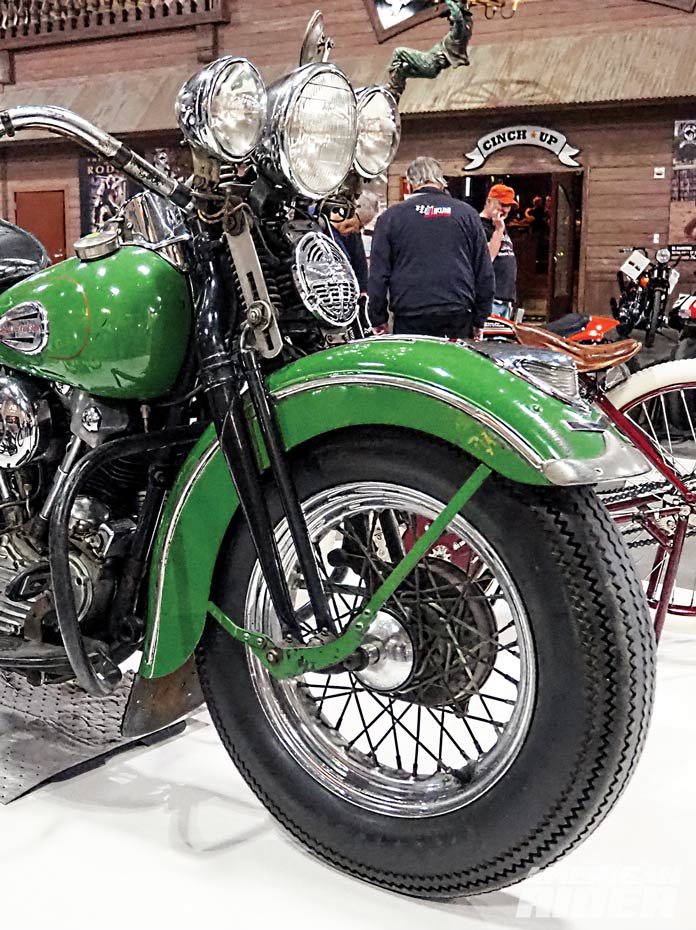
The Springer fork, on the other hand, pivoted at the bottom of the fork via a rocker arrangement, with the wheel mounted to a movable front blade linked to a rigid rear blade. It meant less unsprung weight in motion, a stiffer yet supple fork, a smoother ride, and a more stable (and durable) chassis with anti-dive properties under braking.
The Springer fork invaded Europe in 1920, known there as the Castle fork. It became the premier front suspension for the discerning spirited rider, and it was found on many Brough Superior motorcycles.

Harley’s second-generation Springer fork debuted in 1926, initially on H-D’s new 21ci Single. It used exposed springs (six of ’em) rather than concealed ones, in an effort to better control cushioning and rebound of the fork. The so-called “I-beam” Springer was introduced on the heavier VL models in 1930.
In 1936, the Knucklehead OHV 61 featured a new tubular Springer fork, even stronger than the I-beam version. Ten years later, the Springer was updated with a hydraulic damper made by Monroe. The Springer on Big Twins was discontinued in 1948, and then eliminated from 45ci models in 1952.
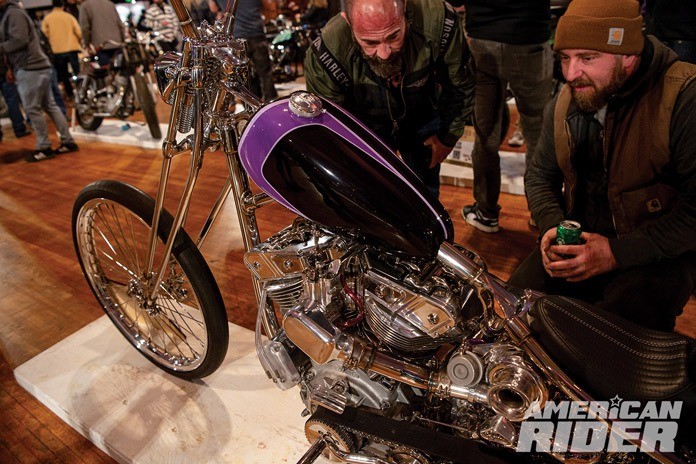
Related: Mama Tried/Flat Out Friday 2022
In a nod to nostalgia and urged on by Willy G. Davidson, Harley resurrected the Springer in 1988 for the Softail FXSTS. It featured a chrome finish and a shock absorber to provide hydraulic damping, as well as high-tech spherical rocker bearings. Its disc brake was a first for a Springer.
In 1995, the Springer made another appearance on the Softail Bad Boy, with a bad-boy black finish. Two years later, the fork was reworked yet again to accommodate wider front tires and a voluptuous front fender, as seen on the Heritage FLSTSD. The Springer was last seen in 2006 on the FLSTSC/I Springer Softail Classic.

The switch to telescopic forks beginning in the 1930s signaled a slow evolution away from Springers and girders, as their simpler construction made them cheaper to build and required less maintenance. But even the best tele forks suffer a level of stiction and dive during braking, so they’re not perfect at delivering smooth and consistent operation.
Imagine a future version of a Springer that fixes its biggest downside – weight – by using carbon fiber and alloy. Then maybe add electronics to make it surface-sensitive with variable damping, and the factory Springer may yet again return.
By the way, aftermarket Springers never left!


















Don’t forget, Willie G brought the Springer back in 2008 with the ” Dark Custom” Crossbones…
I have a 2008 XB and it’s ride is unlike any Harley I’ve owned…
Not bad over all, and the Springer front end handles rough bumps far better than the Softail rear suspension, but does tend to nosedive under hard braking which is probably why the MoCo put 4 piston brakes on the rear and only 2 on the front…